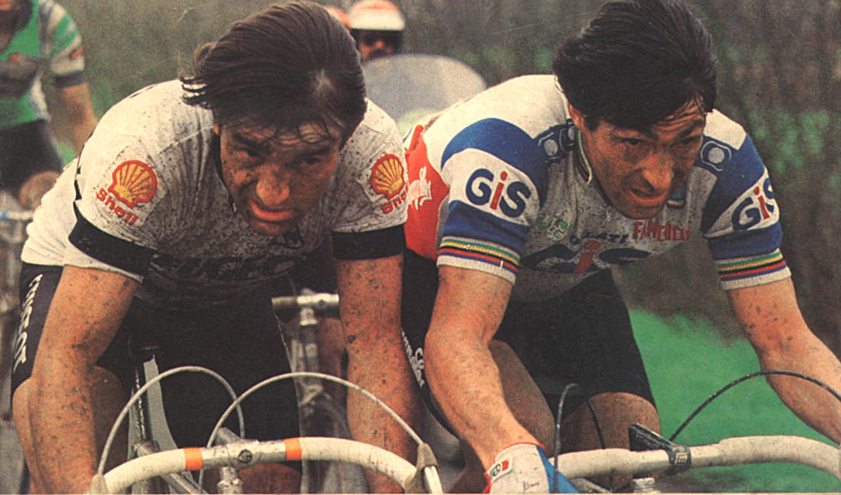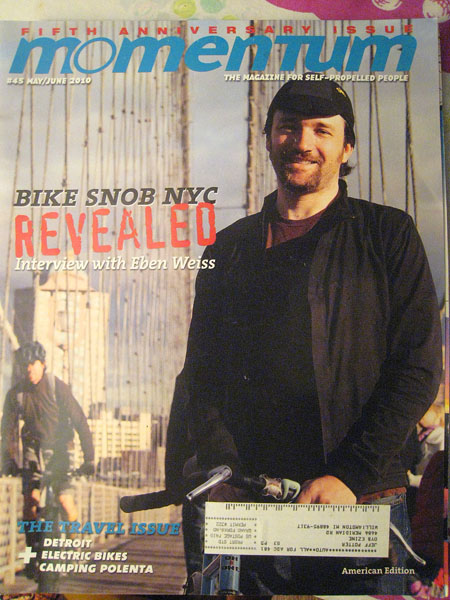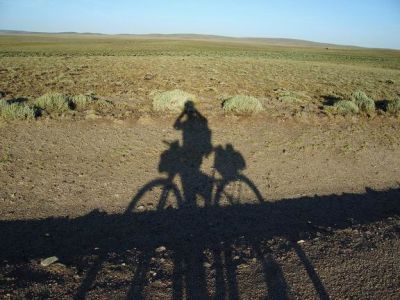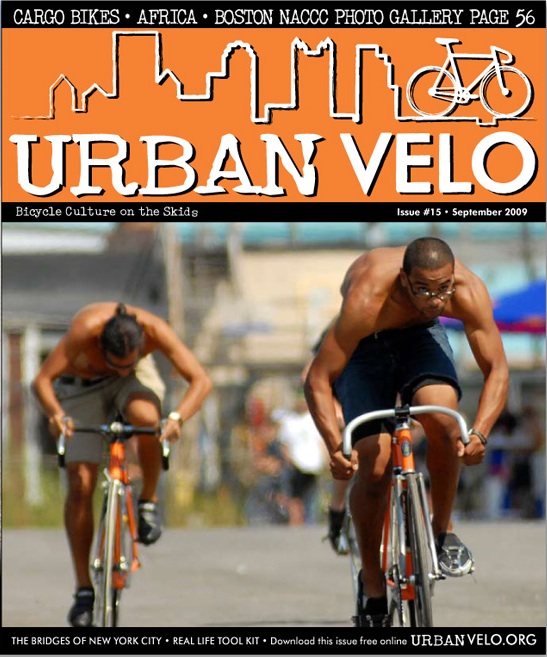People crash way too much on their bikes. Staying up on your bike on pavement is a lot easier than you might think, even when things are dicey.
In recent years I’ve seen a LOT of fit racers on nice bikes hit the deck. Almost always needlessly. I try to speak up on the subject and suggest some ways we can not have such things happen but nobody is interested. Here is a little how-to in case you don’t want it to happen to you.
I’ve seen lack of fitness blamed. Nope.
Any rider can be crash-proofed. Easily. Crash-proofing is about three things: *position, *skill, and *attitude.
This applies to all sorts of biking situations. From beginners and casuals to Tour de France pro’s. Really! OK, mostly it’s limited to pavement riding and to group riding. Not so much mtbiking. So there’s that limitation of the concept.
The Culture
Skill is a complex issue relating to today’s bike culture. Quite a few “Type A” personalities seem to be cycling today. Stubborn individuals have always been part of cycling but now there’s something different. Maybe it’s an affluent aspect with more older cyclists. Today’s bikes cost more, and are high-tech, and these things might bring a cachet of assumed skill … but $1k in 1980 was a lot, too. Fitness is a bigger factor than it was, as is time and energy put in. (“Training” used to be a bit gauche.) Well, bike racing has long been low on coaching and big on attitude. People ACT or stand in the parking lot like they know what they’re doing. So nobody talks about skill. …Except for the most obvious, which is overdone, like “hole”, “gravel” and “hold your line.” …And that’s why those who are coached can so easily rise up. The underdog is not in a bad position at all today, if he’s coached. In short, as in any sport, it’s a wonderful thing for those who don’t know to learn some actual skills from those who do know.
The History
Mike Walden was the coach of the Detroit Wolverines Sports Club, one of the all-time winningest bike clubs, thanks to him. World champs, Tour de France riders, many natl champs, many locals who could hold their own with natl team racers passing thru the region. He was an old school WW2 vet type. Strict. This low budget little program held its own against powerhouse national teams. When I would visit other club scenes in the US their rides seemed like chaos. This is where I learned how not to crash. (Everyone was also required to XC ski and speedskate or rollerskate.)
Walden ran elites and beginners alike through the same little drills before every ride. The elites showed the kids what to do. Getting ready for practices everybody would be AMPED and ready to rock but every time we all had to do this little routine of calisthenics, limbering, then follow-the-leader, then ‘serpentine.’ Everyone together. Some might joke or feel sheepish or consider it baby-ish, but I tell you: everyone obeyed. Our big local super-intense group rides would go whole summers without crashing.
The Position
A huge reason why people crash is that they are riding with *weight on their hands*. So change your position to not do that and you won’t crash as much.
When you’re riding along and you let go of one hand your shoulder shouldn’t drop to that side. If you let go of both hands, your head shouldn’t drop a lot.
What I see instead is a lot of “pushup” riding. This is DANGEROUS!!! If something happens to your front end and you have weight on your hands you GO SPLAT!!!
By contrast if you don’t have much weight on your hands you can move your upper body all over the place FREELY. …To avoid potholes and resist all sorts of bad stuff. You can push off of other bikers. If you have a bend in your arms and your weight is curved back thru your lower back and it’s being supported a bit by some of your leg action then … almost NOTHING can knock you down. Huge difference! (Or, you at least land on your feet, or can instinctively roll. Anything but the *splat*.)
You should ALWAYS be able to exert HUGE *forward* force on the front of your bars in an instant. So you should also be riding with some BEND IN YOUR WRIST. Drop the wrist a bit. At least feel what that’s like.
You should be able to smash off the bottom of your front wheel in a pothole without flipping. If you can PUSH FORWARD in a no-think instant to RESIST any force impeding your bike then you won’t endo. If you’re out on your levers you should be able to tear those suckers out by the roots before your body tips. That’s the feeling to go for.
Your C of G should be in your FEET … Your handling should be anchored in your hips! Your posture should be like a wrestler or jockey: balanced fore/aft. READY for action. Not like a suspension bridge! …Not with your back sagging between your butt and hands.
I’ve had my bars roll out from under me. I’ve had bars break at the stem into two pieces as I’m flying along. No worries! I used what I still had to brake or guide things to a stop.
Now, I do see pics of pro’s today having straight arms, but their stems are so long that their hands aren’t weighted. Also, sheesh, they’re crashing more, too, it seems.
Here’s a test: ride pretty fast then brake hard. What do you do to avoid lifting your rear or going over the bars? I bet you drop into the bike and bend your elbows, dropping them. …That’s how you should always ride. If you have time, it’s OK to drop to the drops and straighten your arms while you brake. You can max-brake on a straightaway doing that. But a need to brake quick doesn’t always (hardly ever) give you time to change hand position.
It’s not a fitness or flexibility thing! You can’t say you’re too old and stiff to ride a bike safely and without strain. A bent arm REDUCES work and bends the lower back LESS.
I’m not advising anything extreme or hard. It doesn’t take being a racer to ride safely and in control.
You should be able to hit the ditch at speed, hit the gravel shoulder. Soft ground is just more resistance. Just bend those arms even more and PUSH forward against the friction.
Indeed, it takes MORE work to ride with straight arms. So support your torso with a bit of your leg action. Legs are strong, arms are weak! Roll your hips back some. Backs are weak! Don’t SAG ’em at all! Round ’em! Don’t “hinge” over at the waist so much. Maybe drop your shoulders but just round the back. I’m not very flexible but I can do it, no sweat.
Here’s something else easy: Check your weight distribution. According to Zinn (guru) it should be 60% on the rear, 40% on front. Measure it with bathroom scale and books (to keep bike level). I bet straight-arm/hand-weighters are more like 50-50.
Turn, Don’t Swerve
You don’t want to weight your hands to turn a bike. Don’t lean. You want to steer. Yeah, leaning is sweet on alpine descents or on banked sweeping turns. I’m talking about flat corners. Or turning this way and that on flat pavement. I don’t EVER want to see the front end of a bike DIVE or swoop when someone turns it when they’re going straight down the road and just want to avoid a pothole. OK, swerving is OK by yourself, for fun. Otherwise, not. Steer around, don’t swerve.
Practice riding around a parking lot in S-patterns without leaning the bike. Play low-speed follow the leader, keeping an exact bike-length behind the rider in front. The leader tries to serpentine more than the others can handle.
Power the INSIDE pedal — it’ll keep your bike more upright. Try it when the pavement is wet — it works! Do it in the mud — it’s the skill you need! Do cyclocross!
People get nervous in a group if someone wiggles their bike around and might even holler. But that’s not the risk. When you look back, for instance, you might wiggle a bit. The problem is when anyone shifts their WEIGHT on their bike — a wiggle isn’t a swerve or a bank.
Don’t Forget the Usual
Then there’s the common things you might hear about: Keep a close gap but don’t overlap. But…how? First: spin. Riding a smallish gear lets you easily control your position in a group. Next: if everyone in a group rides the same gear everyone much more easily keeps a constant position relative to each other. All they have to do is match their footspeed. Then there’s: don’t use your brakes to control your position: use footspeed or air-braking. If you move up on someone just pedal slightly slower for an instant or rise up a bit or move out a touch into the sidewind and you’ll slow back a few inches. Gentle changes are what we want. Don’t do anything that could start a chain-reaction behind you.
Oh, and when you get out of the saddle to climb, don’t throw the bike back. (Ouch.)
Also, I’ve had bikes that seemed skittish and others that were rock solid. Tires play a part, too. Are yours helping or hindering you? People need to think about those differences in their crashproofing.
The Awesomely Simple & Fun Drills
Now, let’s take this up a big step. …Go ride around in the grass in 1st gear with a friend and bump into each other.
Find some fairly fast turf. You want to be able to ride along without laboring or going like a snail but it should still be softer than pavement, just in case.
You’ll find that with bent arms you can horse around all you like and not crash. Now drop back while riding and rub his rear wheel with your front wheel, then come off it, see what that feels like. Learn how to rub tires without crashing! Practice slow on grass, then in a parking lot, then it’ll be easy when bumping happens going faster on the road.
Now be sweet to your fellow rider and put your arm around them and ride around, have a chat. Like a pro! (Again, 1st gear on the grass.)
Now drop back a bit and ride against them. Get your elbow under their thigh and don’t let go of your bars — just pry them off you. (In “hooky” situations, ride on the drops so other bars can’t hook into yours.)
Ride with your elbow against someone else’s. Now tangle your handlebars then untangle them without panicking. Practice! It’s fun!
Now get off your bike and run in some much softer grass and tumble. Learn to do diving falls and rolls with smoothness. Tuck your head. Start as slow as you need. This is what our Coach Walden had us do. He might have even had us dive off of our bikes in the grass and roll. Try what you like. Everyone do it a few times. Be prepared.
Bent arms lets you look behind you without swerving. Practice this. Look left, look right — don’t swerve! Ride hard in the drops then look back while you’re powering — you’ll look UNDER your arm — that’s good. Focus calmly on seeing what’s behind you then look forward again. It’s a SLOW move. Take your time. Fast head-turns make your bike move around. Your bike will ride steady if you take a slow, steady look back. Practice.
Set down a water bottle then ride by and pick it up. Both sides. What can you pick up? Lay a bottle on its side. You don’t need to do this very often but it’s a drill that teaches you how you can move around on your bike and stay in relaxed control. …There’s an easy way, and a hard way. Figure it out!
Practice turning around in a single parking space. Try to do it faster…
The Attitude
Refuse to crash! Attitude is half the game. Never blame anyone. It’s never anyone’s fault but your own if you crash. So don’t. Be prepared. Even if you do crash (hey, there’s no defeating physics) you can “refuse to crash” all the way down. This keeps you in crash management mode even if you do crash. This serves to minimize damage. It becomes more like landing an airplane if you are in fact going down. Accidents do happen, after all. Just way less often to you when you have the right attitude! Really, accidents aren’t usually accidental — an experienced person sees them developing ahead of time. …And is somewhere else when they happen. But if you get a flat in a fast turn and start to slide out, well, just land that plane. Even when you’re crashing you don’t have to lose control. You can check for traffic coming up behind as you’re sliding so you know what to expect in terms of duck’n’cover. By not panicking at any point the whole thing always goes far, far better.
You can refuse to go along with most crashes. Ride over people, bikes and roadside objects, if need be. It’s totally doable and better than falling on them. Stay up even if all your spokes are being ripped out by someone’s pedal. You can stay up on a bike even as it crumples beneath you. You can “stay up” even when you’re going down. (And get your hand out from under the handlebars while you’re at it.)
Sure, some crashes are inevitable or happen too fast to avoid. Crash-proofing doesn’t mean you’ll never crash. It’s just that with a bent-arm, light-hands riding position you crash in a natural and instinctive judo fall rather than a dangerous splat. …And often you don’t fall at all despite calamitous occurrences — you might wreck your wheel, but that’s good, let it take the heat.
Sacrifice your bike every time. If it’s going to hit something don’t think Oooh, I’m hitting something. No, your BIKE is hitting something. Let the object shear off the bike part if need be before you crash. Yeah, it might cost money but it’s worth it.
Practice hard braking — and learning how braking works. Like, as you slow you can slow even faster without skidding. It’s not linear. Don’t apply even pressure: increase it.
Learn about skidding and sliding, and countersteering the front if it slides. Practice slow, in places where it’s slippery yet somewhat soft: like a dirt trail or CX course.
Learn to bunnyhop. Every which way. Front, back, both together. Sideways!
Watch the other riders around you if you’re in a group! Stay away from anyone who is sketchy. Say something calm to someone when they do something scary. Don’t scream angrily but don’t stay quiet.




